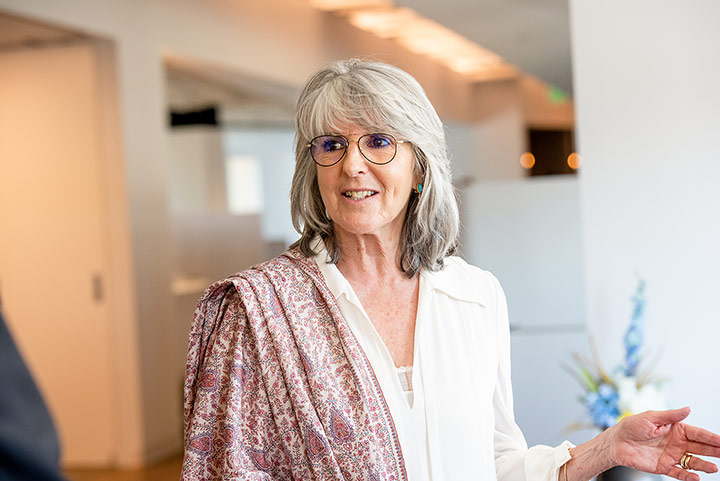Passing the Torch: USC Shoah Foundation Announces Board of Councilors Leadership Transition

When Lee Liberman first viewed testimonies from USC Shoah Foundation’s Visual History Archive (VHA) almost 25 years ago, she was immediately moved to action.
“We have a commitment and duty to humanity to combat hate, and we must work diligently to bring these testimonies to communities around the globe,” she said.
More than two decades later, as Lee transitions to an emeritus role after a successful term as Chair of the Institute’s Board of Councilors, she has more than delivered on her pledge.
The nascent archive Lee saw in USC Shoah Foundation’s original offices—located in trailers on the back lot of Universal Studios—has since grown into a one-of-its-kind resource with over 55,000 testimonies available to educators, researchers, and scholars through 185 access sites in 23 countries.
Lee, a Melbourne, Australia-based philanthropist, has been an integral force in that growth. Over her many years of dedicated service, she has facilitated key partnerships, provided strategic guidance and helped to advance the Institute’s leading role in testimony-based education and research around the world.
Her work has always been driven by a belief in the importance of testimony in countering antisemitism and other identity-based hate.
“I am committed to preserving the voices of the survivors, who can guide us in the important work of combatting hatred around the world, and that should be our compass as we navigate this worldwide rise in antisemitism and acts of racist hatred,” she said when she became the Institute’s first chairperson to be based outside the U.S.
Earlier this year, Lee was awarded membership to the Order of Australia (AM) for her significant contributions to the Jewish community and education.
During Lee’s tenure, the Visual History Archive expanded to include testimonies from the Armenian Genocide, the Genocide Against the Tutsi in Rwanda, mass violence against the Rohingya and Yazidi, and from survivors and witnesses to the Bosnian Genocide. Lee also joined with other board members in encouraging the Institute to record the stories of Holocaust survivors who had not yet given testimony. As a result, the Institute launched the Last Chance Testimony Collection initiative and, despite the constraints of the COVID-19 pandemic, developed innovative ways to capture testimonies from among a dwindling number of Holocaust survivors.
Lee took a leadership role in conceiving and funding the Visual History Archive Program (VHAP), which exponentially increased the number of locations worldwide where the public can access the Visual History Archive. The program is now known as the Lee Liberman Visual History Archive Program as a result of Lee’s visionary input. She was also instrumental in enabling the collection of Rohingya testimonies that were featured on CNN and which the UN and the International Court of Justice are using as trial evidence. In addition, she connected USC Shoah Foundation with like-minded organizations in Israel to establish and expand testimony-based programming.
Lee believes that in order to rid the world of hate, education must begin with the earliest learners because children possess an innate understanding of right and wrong. This belief has helped drive the Institute’s expanded focus on young learners and the creation of groundbreaking IWitness activities and resources for primary education.
USC President Carol L. Folt expressed gratitude for Lee’s untiring service. “From the moment I met Lee, her devotion to the mission of USC Shoah Foundation and the preservation of its Visual History Archive was inspirational. We are grateful for her stewardship and guidance over these past three years.”
Folt said she looked forward to working with Lee’s successor, current Vice Chair Joel Citron, who assumes the leadership role after years of service with the Institute.
Kori Street, Finci-Viterbi Interim Executive Director of USC Shoah Foundation said Lee had brought thoughtfulness from an international perspective to launch a new Strategic Plan that had helped to grow the Institute’s work and presence worldwide.
“Her dual commitment to expanding the Institute’s global vision and securing the future of the Visual History Archive at USC has set us on a path towards sustainability and long-term success,” Street said.
Like this article? Get our e-newsletter.
Be the first to learn about new articles and personal stories like the one you've just read.